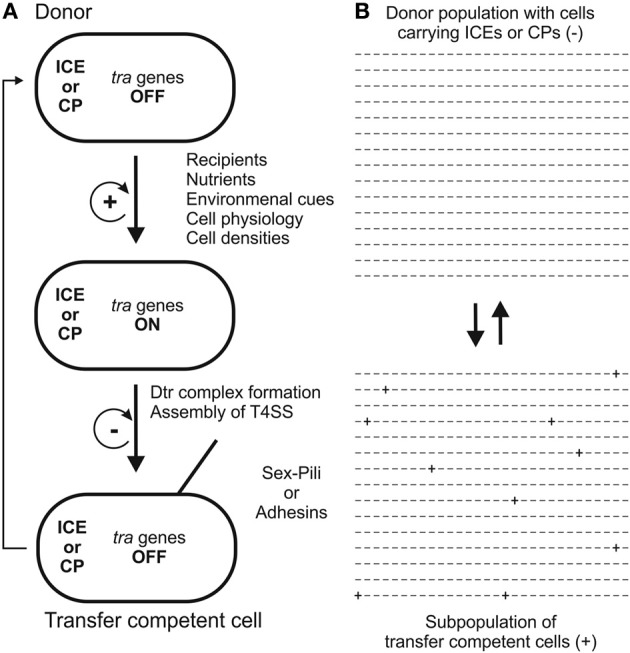Figure 2.

Two models for the development of transfer competence in single cells (A) and populations (B) are shown. In single cells (A) tra genes are turned ON by a variety of stimuli. A positive feedback loop ensures that, once initiated, cells proceed to transfer competence, involving formation of the Dtr complex and assembly of the T4S apparatus. In transfer competent cells, tra genes are switched OFF, mediated by a negative feedback loop. Eventually, transfer competence is lost by transition to unfavorable conditions. In unstructured, well-mixed populations (B) only a few donor cells (indicated by + signs) develop transfer competence, thereby minimizing the fitness cost for the population. For examples, detailed descriptions and discussions, the reader is referred to the section “How and when to turn DNA transfer genes ON” in the main text of this review.
